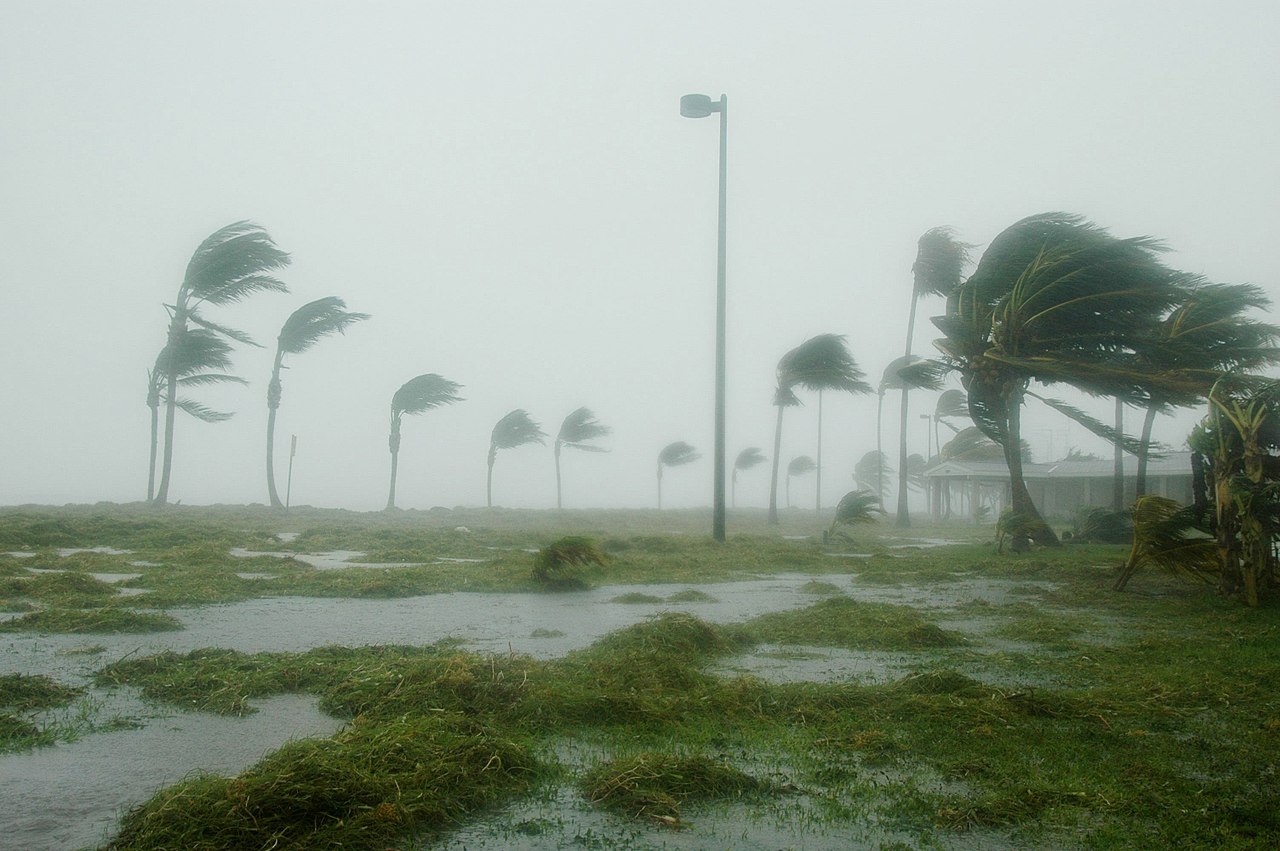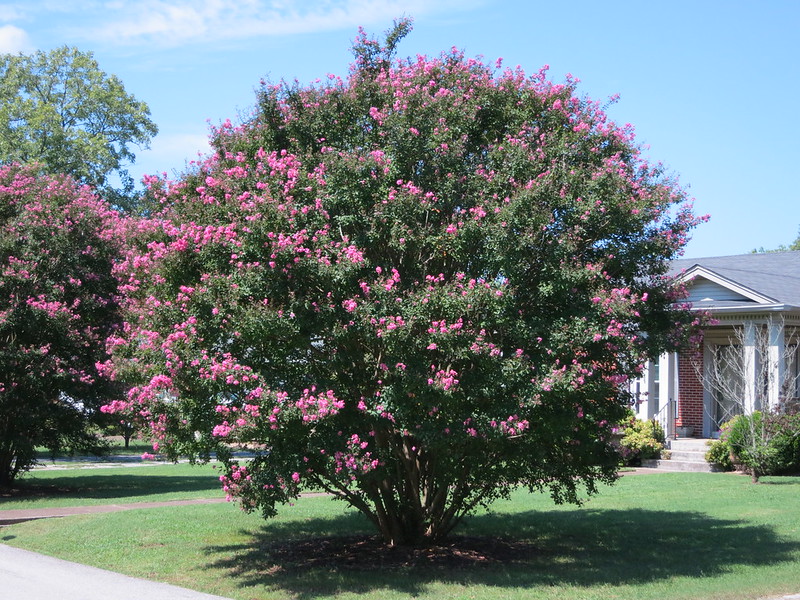
A hurricane is not a matter of “if” in Tampa Bay, it’s a matter of “when.” In 2017, the metro area was one of many targets for Hurricane Irma as it bounced across the Caribbean and up Florida’s western coast. It caused billions of dollars in damage. While it made landfall in other parts of Florida as a category 4 or category 3 storm, it was weakening when it hit Tampa. We lucked out here, but we can use Irma as a cautionary tale and a good reason why you should select hurricane-resistant trees for your yard.
5 Hurricane-Resistant, Tampa-Friendly Trees
Here are five of them that with the proper care might withstand the next named storm to head our way.
Southern Magnolia (Magnolia grandiflora)
These trees became very popular after Hurricane Wilma tore through the state. Not just because of their beauty, but because of their strength. They can grow up to 80 feet high with incredible wind resistance. They also provide an excellent windbreak in heavy storms.
Crape Myrtle (Lagerstroemia indica)

Floridians love their crape myrtles. This tree, with its fuschia, pink, and white blooms, is a favorite in Southern climates. It’s an attractive tree that doesn’t require a lot of upkeep. It’s also one of the trees listed in the City of Tampa tree matrix, an important resource for Rob Northrop, an extension forester with the UF/IFAS (University of Florida/Institute of Food and Agricultural Sciences) extension. It’s important to note that the crape myrtle will not tolerate storm surge. “No, not if it’s saltwater,” Northrop said. But the crape myrtle is one of a handful of trees that has the highest wind resistance.
Dahoon Holly (Ilex cassine)

The dahoon holly is native to the southeastern United States. Since it evolved in a hurricane-prone environment, it should come as no surprise that it’s also listed as having the highest wind tolerance. And unlike the crape myrtle, it has extended flood tolerance, although a saltwater storm surge is damaging. The dahoon holly produces pretty, bright red berries in the winter, which feed wildlife and adds a festive dash of color to your winter yard.
Date Palm (Phoenix dactylifera)
The palm tree is famous for withstanding hurricane-force winds. Just think of all the images you’ve seen of palm trees bending under the fury of a hurricane. The date palm (Phoenix dactylifera) is also a favorite of tree care experts. It’s pretty tolerant of drought, and while it’s a slow grower, it can reach up to 80 feet high. It’s not native to Florida, but it is well adapted to the climate and is cultivated around the world for its sweet fruit.
Pindo Palm (Butia capitata)

The pindo palm (also known as jelly palm) will survive hurricane-force winds better than most species. When mature, it’s shorter than the date palm, topping out about 25 feet. Like most of the trees on this list, it does not have much flood tolerance, but it is moderately salt-tolerant. This palm tree is native to South America but does well in Florida. It produces a small fruit that makes an excellent jelly.
Podocarpus (Podocarpus macrophyllus)
Funny name, tough tree. The podocarpus is an evergreen tree that is also on the city’s tree matrix because of the extremely high wind resistance. It’s native to Asia, and Northrop says it’s not yet a problem tree, but it may become invasive at some point. It also has low flood tolerance, which is something to keep in mind if your property is prone to storm surge, although your podocarpus tree may be the last thing on your mind if storm surge reaches your property. It’s also called the Japanese yew tree and can get up to about 30 or 40 feet high.
Tree Placement
It’s just as important to plant the right tree in the right place. Plant the larger trees away from your home and power lines. This reduces the risk of them toppling onto your house or knocking down power lines. Northop recommends planting groups of different species together. “It increases the wind resistance, and may work to protect your home.” The group of trees will protect each other as well as your landscape.
5 Trees to Avoid
Some trees are bad choices, no matter where you plant them.
Australian pine
This invasive is downright dangerous! It’s shallow roots make it easy for a storm to uproot the tall tree and turn it into a flying spear.
Bradford Pear
This invasive should never be planted in Florida or anywhere in the United States. Even a heavy rainstorm will split its weak bark in two.
Sand Pine
It holds up well in heat and frost, but not in a hurricane.
Chinese Elm
Has no wind resistance.
Water Oak and Laurel Oak
Unlike the live oak, these varieties are too weak to withstand hurricane-force winds.

The Tampa Bay-St. Petersburg area gets few direct hits from hurricanes. There was Irma, and Wilma brushed the metropolitan area as it hit Cape Romano in 2005. There were two direct hits in 1921 and 1848. But even a tropical storm, with winds anywhere between 39 and 73 mph, can put a tree to the test. The same goes for the outer bands of a storm that makes landfall on the Atlantic coast, or elsewhere along the Gulf Coast.
Every year, the National Hurricane Center puts out a hurricane season forecast, but there’s no guarantee a major named storm won’t come your way. Hurricane-resistant trees can also save you from further property damage. They’re less likely to send branches through your windows or fall onto the roof or your car. Just like anyone who lives along the Gulf Coast, if you’re planting trees in Tampa, wind resistance should be a major factor.
Talk to a Phoenix landscaping expert if you need help selecting plants or trees for your landscape.
Robert Northrop, University of Florida teaches classes and helps homeowners with forestry and tree care. He also works with local governments, arboricultural and natural resource businesses, and on planting, restoring, and managing trees. His No. 1 goal is preserving natural areas.





